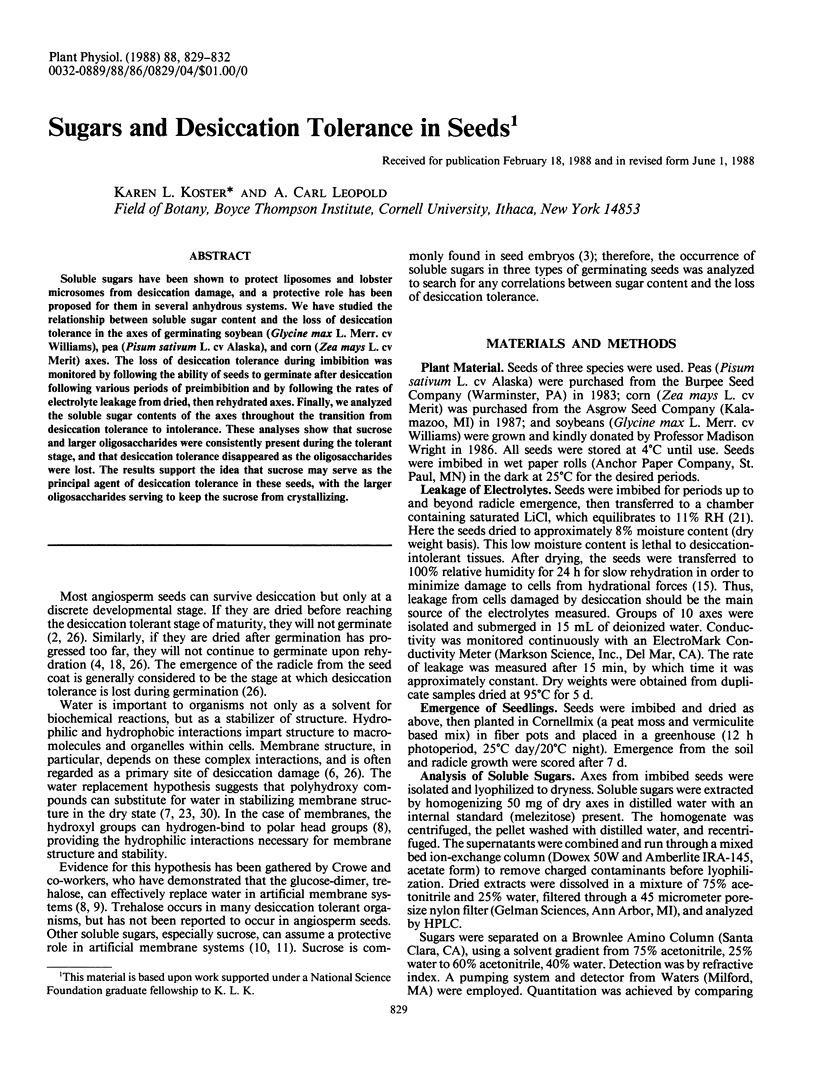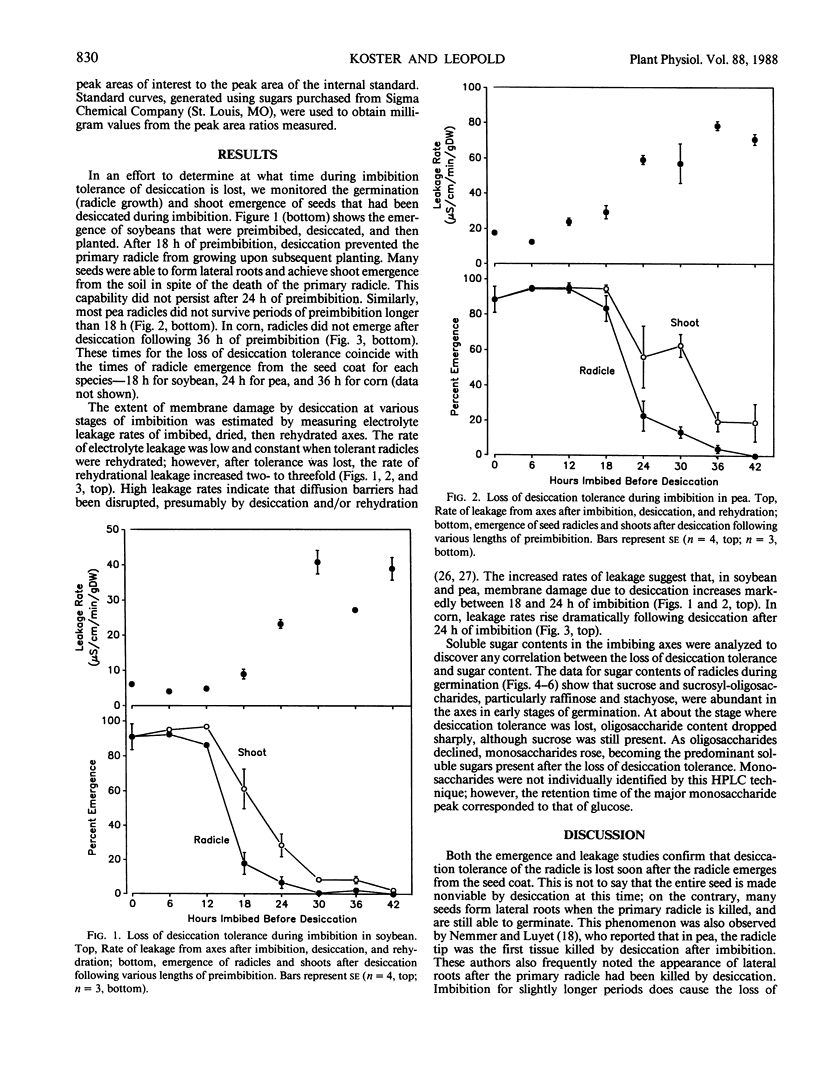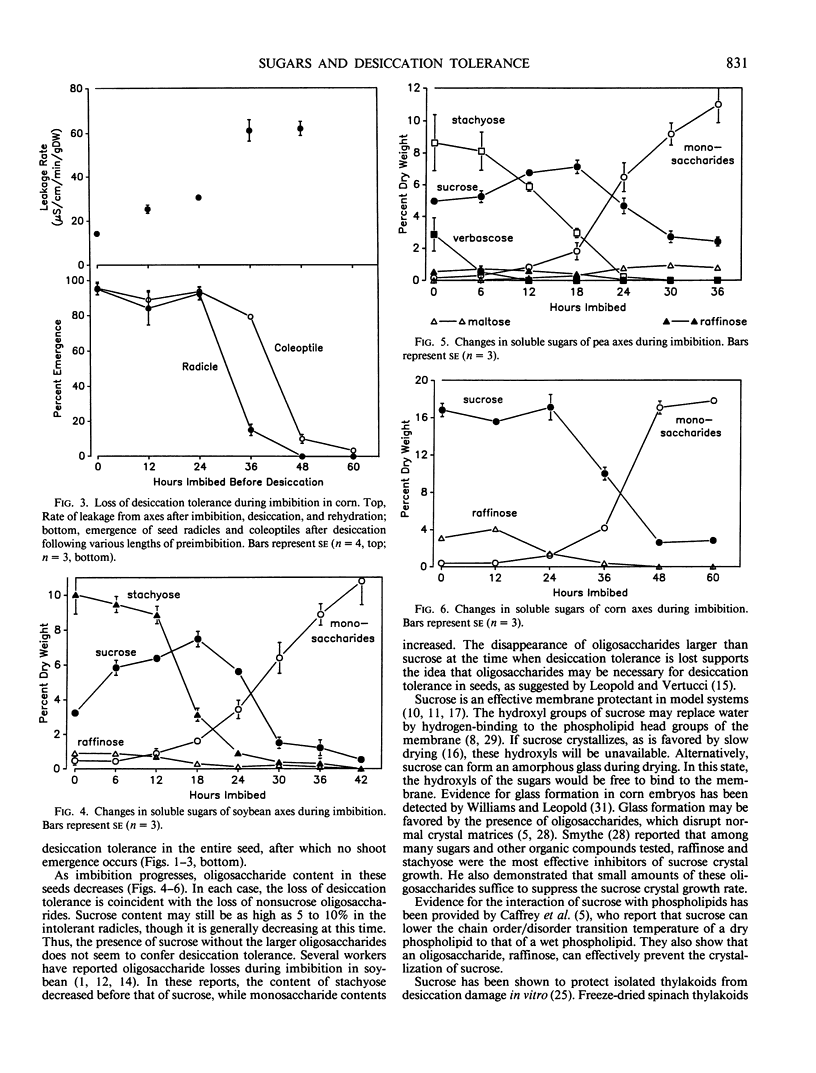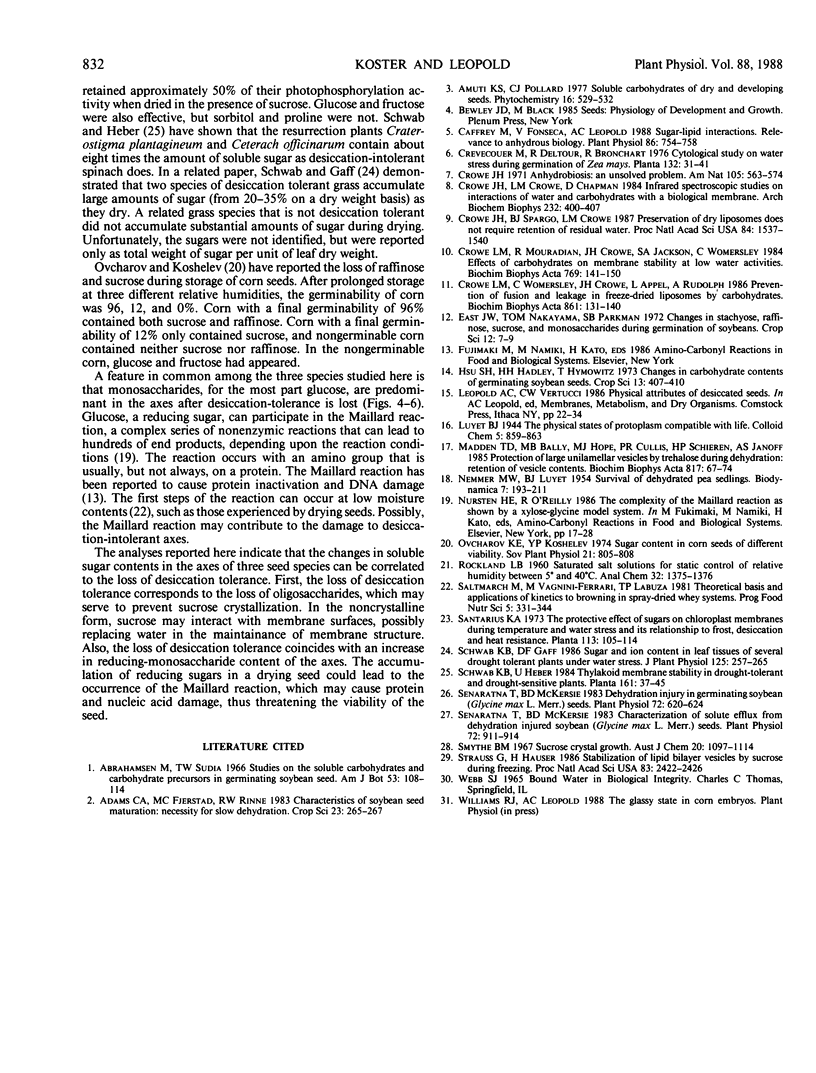Abstract
Soluble sugars have been shown to protect liposomes and lobster microsomes from desiccation damage, and a protective role has been proposed for them in several anhydrous systems. We have studied the relationship between soluble sugar content and the loss of desiccation tolerance in the axes of germinating soybean (Glycine max L. Merr. cv Williams), pea (Pisum sativum L. cv Alaska), and corn (Zea mays L. cv Merit) axes. The loss of desiccation tolerance during imbibition was monitored by following the ability of seeds to germinate after desiccation following various periods of preimbibition and by following the rates of electrolyte leakage from dried, then rehydrated axes. Finally, we analyzed the soluble sugar contents of the axes throughout the transition from desiccation tolerance to intolerance. These analyses show that sucrose and larger oligosaccharides were consistently present during the tolerant stage, and that desiccation tolerance disappeared as the oligosaccharides were lost. The results support the idea that sucrose may serve as the principal agent of desiccation tolerance in these seeds, with the larger oligosaccharides serving to keep the sucrose from crystallizing.
Full text
PDF



Selected References
These references are in PubMed. This may not be the complete list of references from this article.
- Caffrey M., Fonseca V., Leopold A. C. Lipid-sugar interactions : relevance to anhydrous biology. Plant Physiol. 1988 Mar;86(3):754–758. doi: 10.1104/pp.86.3.754. [DOI] [PMC free article] [PubMed] [Google Scholar]
- Crowe J. H., Crowe L. M., Chapman D. Infrared spectroscopic studies on interactions of water and carbohydrates with a biological membrane. Arch Biochem Biophys. 1984 Jul;232(1):400–407. doi: 10.1016/0003-9861(84)90555-1. [DOI] [PubMed] [Google Scholar]
- Crowe J. H., Spargo B. J., Crowe L. M. Preservation of dry liposomes does not require retention of residual water. Proc Natl Acad Sci U S A. 1987 Mar;84(6):1537–1540. doi: 10.1073/pnas.84.6.1537. [DOI] [PMC free article] [PubMed] [Google Scholar]
- Crowe L. M., Mouradian R., Crowe J. H., Jackson S. A., Womersley C. Effects of carbohydrates on membrane stability at low water activities. Biochim Biophys Acta. 1984 Jan 11;769(1):141–150. doi: 10.1016/0005-2736(84)90017-8. [DOI] [PubMed] [Google Scholar]
- Madden T. D., Bally M. B., Hope M. J., Cullis P. R., Schieren H. P., Janoff A. S. Protection of large unilamellar vesicles by trehalose during dehydration: retention of vesicle contents. Biochim Biophys Acta. 1985 Jul 11;817(1):67–74. doi: 10.1016/0005-2736(85)90069-0. [DOI] [PubMed] [Google Scholar]
- NEMMER M. W., LUYET B. J. Survival of dehydrated pea seedlings. Biodynamica. 1954 Dec;7(145-148):193–211. [PubMed] [Google Scholar]
- Senaratna T., McKersie B. D. Characterization of Solute Efflux from Dehydration Injured Soybean (Glycine max L. Merr) Seeds. Plant Physiol. 1983 Aug;72(4):911–914. doi: 10.1104/pp.72.4.911. [DOI] [PMC free article] [PubMed] [Google Scholar]
- Senaratna T., McKersie B. D. Dehydration Injury in Germinating Soybean (Glycine max L. Merr.) Seeds. Plant Physiol. 1983 Jul;72(3):620–624. doi: 10.1104/pp.72.3.620. [DOI] [PMC free article] [PubMed] [Google Scholar]
- Strauss G., Hauser H. Stabilization of lipid bilayer vesicles by sucrose during freezing. Proc Natl Acad Sci U S A. 1986 Apr;83(8):2422–2426. doi: 10.1073/pnas.83.8.2422. [DOI] [PMC free article] [PubMed] [Google Scholar]


